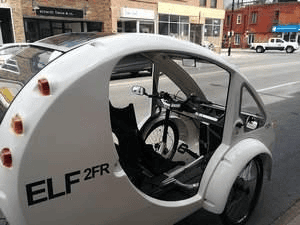The Latest in Solar Technology

Solar energy technologies have evolved a lot since they first made their debut in the 1960s. While previously solar photovoltaics (PV) were seen as a thing of the future, today, technological breakthroughs have positioned the best solar companies for huge growth.
A series of new developments in solar PV technology also promise to contribute to the industry’s success.
Advances in Solar Cell Technology
Researchers have long looked for ways to improve the efficiency and cost-effectiveness of solar cells - the lifeblood of solar PV systems. A solar PV array is comprised of hundreds, sometimes thousands of solar cells, that individually convert radiant sunlight into electrical currents.
The average solar cell is approximately 15% efficient, which means nearly 85% of the sunlight that hits them does not get converted into electricity. As such, scientists have constantly been experimenting with new technologies to boost this light capture and conversion.
Light-Sensitive Nanoparticles. Recently, a group of scientists at the University of Toronto unveiled a new type of light-sensitive nanoparticle called colloidal quantum dots, that many believe will offer a less expensive and more flexible material for solar cells. Specifically, the new materials use n-type and p-type semiconductors - but ones that can actually function outdoors.
This is a unique discovery since previous designs weren’t capable of functioning outdoors and therefore not practical applications for the solar market. University of Toronto researchers discovered that n-type materials bind to oxygen - the new colloidal quantum dots don’t bind to air and therefore can maintain their stability outside. This helps increase radiant light absorption. Panels using this new technology were found to be up to eight percent more efficient at converting sunlight.
Gallium Arsenide. Researchers at Imperial College University in London believe they have discovered a new material - gallium arsenide - that could make solar PV systems nearly three times more efficient than existing products on the market. The solar cells are called “triple junction cells” and they’re much more efficient because they can be chemically altered in a manner that optimizes sunlight capture. The model uses a sensor-driven window blind that can track sunlight along with “light pipes” that guide the light into the system.
👉 Related Reading: Solar Energy Safety Tips
Advances in Energy Storage
Another major focus of scientists is to find new ways to store energy produced by solar PV systems. Currently, electricity is largely a “use it or lose it” type resource whereby once it’s generated by a solar PV system (or any type of fuel source) the electricity goes onto the grid and must be used immediately or be lost. Since the sunlight does not shine 24 hours a day, this means that most solar PV systems are only meeting electrical demands for a portion of the day - as a result, a lot of electricity is lost, if it’s not used.
There are a number of solar batteries on the market that can store this energy, but even the most high-tech ones are fairly inefficient; they’re also expensive and have a pretty short shelf life, making them not the most attractive options for utility companies and consumers. That is why scientists are exploring different ways to store this electricity so that it can be used on demand.
Molten Salt Storage Technology
A company called Novatec Solar recently commissioned a promising energy storage solution for solar PV systems using a molten salt storage technology. The process uses inorganic salts to transfer energy generated by solar PV systems into solar thermal using heat transfer fluid rather than oils as some storage systems have.
The result is that solar plants can operate at temperatures over 500 degrees Celsius, which would result in a much higher power output. This means that costs to store solar would be lowered significantly and utility companies could finally use solar power plants as base load plants rather than to meet peak demand during prime daylight hours.
Solar Panel with Built-In Battery
In a project funded by the United States Department of Energy, Ohio State University researchers recently announced they created a battery that is 20% more efficient and 25% cheaper than anything on the market today. The secret to the design is that the rechargeable battery is built into the solar panel itself, rather than operating as two standalone systems. By conjoining the two into one system, scientists said they could lower costs by 25% compared to existing products.
👉 Related Reading: How To Find Cheap and Free Solar Panels
Advances in Solar Cell Manufacturing
Another area that has made solar PV technologies cost prohibitive compared to traditional fuel sources is the manufacturing process. Scientists are also focused on ways to improve the efficiency of how solar components are manufactured.
Magnesium Chloride
While over ninety percent of solar panels on the market today are comprised of silicon semiconductors, the key ingredient to converting sunlight into electricity, many believe the next generation of solar panels will be made of a thin film technology that uses narrow coatings of cadmium telluride in solar cells - this technology promises to be a much cheaper and more efficient way to engage the photovoltaic process.
One major obstacle for cadmium telluride thin film cells is that they become highly unstable during the manufacturing process, which currently uses cadmium chloride. Researchers have devised a new, safe, and seemingly low cost way to overcome this hurdle by using a material called magnesium chloride instead of cadmium chloride.
Magnesium chloride is recovered from seawater, an abundant resource, which makes the resource very low cost, as well as non-toxic. Replacing the manufacturing process with this material promises to increase the efficiency of these solar cells from two percent to up to fifteen percent.
New Solar Applications
When most people think of solar PV systems they think of them atop roofs or mounted for industrial scale use. But researchers are exploring a number of unconventional solar applications that could promise to transform the industry.
Solar Roadways
Scientists are exploring ways to actually line highways and roads with solar panels that would then be used to deploy large amounts of electricity to the grid. This would help overcome a major barrier to industrial scale solar, which opponents say threatens to take up too much land. Solar roadways have already popped up in the Netherlands.
Floating Solar
Another way to address land use concerns associated with wide scale solar is to erect solar plants on the water, since over 70% of the Earth’s surface is covered in water.
Some researchers, including a French firm called Ciel et Terre, are experimenting with this technology. The company has projects set up in France, Japan, and England and other parts of the world are also piloting projects including a project in India and California in the U.S.
Space Based Solar
Scientists are resurrecting a technology that was first tested over forty years ago in which space-based satellites capture sunlight and convert it into microwave energy that is then beamed back to earth. This type of technology promises to capture significantly more sunlight (nearly 90%) since satellites can be positioned to optimize light capture round the clock. India, China, and Japan are investing heavily in these technologies right now.
Siting solar collector panels properly for optimum collection makes an enormous difference in the amount of energy you’ll save. Solar collectors should be aimed true south and tilted at an angle between 18 and 50 degrees.
If your roof doesn’t have a southern exposure, you’ll need to build a frame for the collectors that is perpendicular to your roof-line to maximize exposure. When choosing the site for your collectors, avoid anything that might block the sunlight, like trees, chimneys or other buildings. EWEB and EPUD customers can receive free solar site analysis.
This technology can be used to power an ever growing number of solar appliances and gadgets.
Solar Water Heaters
Each system has its own maintenance requirements, and some need more maintenance than others. Ask about maintenance requirements before you buy.
Maximize the efficiency of your system by insulating pipes and storage tanks, setting the thermostat on your water heater to 120 degrees, and using low-flow showerheads.
Passive Solar Water Heaters
Passive solar water heating systems do not require an auxiliary source of power to deliver solar heated water to your faucet. There are no pumps or electronic controls.
The following types of systems are available locally:

Thermosyphon System
A thermosyphon-type solar water heater has an insulated water storage tank mounted above flat plate solar collectors. The collectors transfer heat from the sun to an antifreeze collector fluid.
The hot collector fluid flows through a heat exchanger wrapped around the water storage tank, heating the household water inside the tank. The collector fluid then flows back down into the collectors. Whenever hot water is used, solar-heated water is drawn from the storage tank into the electric water heater. The Solahart is available locally.
Batch System
In a “batch” heater, household water is stored in a series of metal tubes enclosed in glass tubes. The sun shines on the tubes and warms the water inside. Like the thermosyphon system, the solar heated water in the tubes is drawn into the electric water heater when hot water is used.
Active Solar Water Heaters
Active systems use solar collectors to gather the sun’s heat. These systems also incorporate sensors that control the system’s operation. When the solar collectors in an active system reach a preset temperature, a sensor signals an internal pump to circulate heat transfer fluid through the collectors.
The fluid collects the sun’s heat and transfers it to the water. When there is enough hot water in the storage tank, or if the outdoor temperature drops to near freezing, the sensor signals the pump to stop and the fluid in the collectors drains back to a small holding tank. This process, called “drainback,” protects the collectors from freezing.

Drainback System
- The following systems are available locally. Each incorporates the drainback system:
- Solar Skylight uses a single, large flatplate collector that is equipped with a plastic heat absorber.
- The Sun-Pak incorporates two flatplate collectors with copper plates for heat absorption.
- Thermomax uses a series of smaller, vacuum-insulated, tubular solar collectors with copper absorber plates.
Convenient Charging
The SunStash Portable Solar Power Charger, as its name suggests, is a portable solar-powered charger. It is strong enough to charge your device, while it is charging itself. The SunStash can simultaneously charge devices by using its USB port and its high powered port.
A fully charged SunStash power pack carries a 60 W charge and you can charge it by using the sun, or if it’s more convenient, by way of its AC power adapter, turning it into an extra battery. The solar-powered charger is designed to supply emergency backup power for your electrical devices. It can also be used if you’re simply hanging out in a place - with no power.

Rocking Chair Power
The Ortarkey chair is a rocking chair. It is sleek looking and designed to hide its functional ability to generate electricity. The idea of rocking back and forth comfortably, while reading or petting a cat in your lap, and simultaneously generating electricity for your reading lamp as you rock, seems idyllic.
Solar Boats
Solar boats are becoming more and more popular. Electric boats were quite popular from the 1880s to the 1920s, when internal combustion engines became popular. With fuel prices rising and air pollution becoming an issue, the interest in renewable energy has increased significantly. Using solar power gives the boat unlimited range, as long as the sun is shining.

Source - Theo Schmidt via en.wikipedia.org
A Rectangular Skateboard
The WalkCar is perhaps the world’s smallest electric four wheeled vehicle. It can be carried in a backpack or a large handbag. It is small, the size of a laptop, and resembles a square skateboard. It takes three hours to charge via its USB port, providing a range of approximately 7.5 miles (12km).
Staying Cool!
Solar powered fan baseball caps are becoming popular. It’s lightweight and provides a breeze on your face. No batteries required, because it runs on its own solar power.
Charging While Cooking
The PowerPot 5 is an interesting mix of a lightweight cooking pot combined with a portable USB charger. The system converts heat into usable electricity. Using this pot to cook your food over an open fire will allow you to charge your phone or computer. This is nice, if you’ve taken your laptop on a camping trip, or if your phone has run out of power.

The Solar Powered Phone
Samsung’s Blue Earth is the first solar powered phone. It has a solar cell on the back and is made from recycled cardboard. The phone has a small screen but the controls are large and easy to work with. A solar powered phone just seems like a good idea.
Concentrating Light
German Architect, Andre Broessel, has a spherical design that can “squeeze more juice out of the sun” – even at night and in low-light regions. His company, Rawlemon, has created a spherical solar power generator prototype called the beta.ray. The technology combines spherical geometry principles with a dual axis tracking system, allowing twice the yield of a conventional solar panel, and in a much smaller surface area. The design is fully rotational and suitable for inclined surfaces, the walls of buildings, and anywhere with access to the sky. It could even be used as an electric car charging station.
“The beta.ray uses a hybrid collector to convert light and thermal energy at the same time. The design reduces the photocell area by 75%. By using the ultra transmission Ball Lens point focusing concentrator, it operates at efficiency levels of nearly 57% in hybrid mode.
At night, the Ball Lens can change into a high-powered lamp, to illuminate your location. The station is designed for off grid conditions as well as to supplement a buildings’ consumption of electricity and thermal needs, like hot water.”
The Aeroleaf
A French company called New Wind is installing tree-shaped wind turbines at the Place de la Concorde in Paris, France. The device is called the Aeroleaf, and is categorized as a biometric wind turbine. The company’s founder, Jerome Michaud-Lariviere, came up with the idea while in a Paris square, when he “saw the leaves tremble when there was not a breath of air.”
It is his hope the trees will be used to exploit the small air currents flowing along buildings and streets. He believes Aeroleaf trees could eventually be installed in people?s yards and urban centers.
Michaud-Lariviere readily admits the efficiency of the trees is low compared to more consistent currents higher up, but believes the $37,000 trees are more viable and less intrusive than “monstrous” conventional wind turbines. The 26 foot high trees, which use tiny blades inside the “leaves,” could potentially be profitable after a year of wind speeds averaging 7.8 mph. They can generate electricity in wind speeds as low as 4.5 mph. Scroll down for more photos and the video.

Source: Ian Irving via Flickr.com
The ELF
Described as the “most efficient vehicle on the planet,” the ELF is a solar and pedal-powered hybrid tricycle. It is hand-built in the United States by Organic Transit.
The ELF is available in one, two and three seater models. It is legally considered a bicycle, so it can be used on bike paths, parks and sidewalks and requires no gas, license, registration or insurance.
The solar-charged electric motor does not power the vehicle, but instead “assists” your pedaling with a boost of power whenever you need it. The ELF can travel at over 25 mph, and the motor is geared low enough to climb hills easily.
The battery has a range of up to 16 miles with no pedaling, and 30 miles with pedaling. It takes about two to three hours to charge, using a normal standard wall outlet. In direct sunlight, the ELF can be completely recharged in about 8 hours. The solar powered tricycles start at $5,495, with a variety of models and accessories available. You can even have them shipped unassembled.
The Pavegen Vibration Collector
In Rio de Janeiro, young people are playing on a newly-installed football field and storing electricity for the neighborhood’s street lights with every step. Their actions across the AstroTurf are converted from kinetic energy into electricity by 200 hidden energy-capturing tiles.
Founded by Laurence Kemball-Cook in 2009, the company exports its energy-converting tiles to twenty countries across the world. Customers range from Siemens to Nike and Uniqlo. “I started this in my bedroom with just a sketch,” Kemball-Cook told The Sunday Telegraph. “Now we employ 30 staff in four offices and we’re profitable.”
Starting Fires
The Solar Fire Starter is pocket-size solar fire starter and lighter. A stainless steel parabolic mirror, like the one used to light the Olympic torch, is the foundation of its design. It is designed to focus sunlight into a precise focal point that can reach hundreds of degrees. This solar fire starter is perfect for backpacking, hiking, boating, and as a great addition to a survival tool kit.